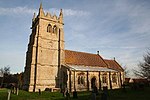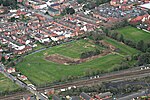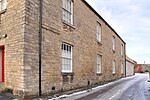Silk Willoughby

Silk Willoughby is a village and civil parish in the North Kesteven district of Lincolnshire, England. The population of the civil parish at the 2011 census was 299. It is situated 2 miles (3 km) south from Sleaford. There are a number of council and rented properties within the village in addition to owner-occupied housing, both old and new. There are several listed buildings including a Manor House and a former rectory.The parish of Silk Willoughby comprises approximately 2,500 acres (10 km2) of arable and grazing land. The ecclesiastical parish is part of the benefice of Quarrington and Old Sleaford.The parish church is dedicated to St Denis. The modern diocesan records use the name "St Denis"' for the church, but the National Monuments Record shows it as "St Denys". St Denis or Denys are alternative spellings for the same person. The nearby church in Sleaford uses the Denys spelling. Several air accidents have occurred in the parish. On 4 June 1944, a B-24 crashed in a field after being abandoned mid-air and on 7 June 1962, a Hawker Hunter T7 stalled and crashed, killing both crew.Silk Willoughby won the Best Kept Village award in 2007 and 2013.
Excerpt from the Wikipedia article Silk Willoughby (License: CC BY-SA 3.0, Authors, Images).Silk Willoughby
London Road, North Kesteven Silk Willoughby
Geographical coordinates (GPS) Address Nearby Places Show on map
Geographical coordinates (GPS)
| Latitude | Longitude |
|---|---|
| N 52.972909 ° | E -0.428206 ° |
Address
London Road
London Road
NG34 8NY North Kesteven, Silk Willoughby
England, United Kingdom
Open on Google Maps









